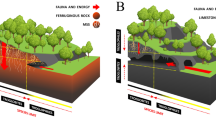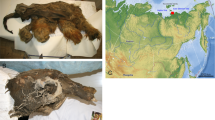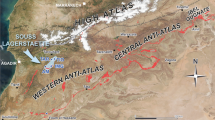Abstract
PROLIFIC vertebrate localities within the Karroo System of the northern part of the Luangwa Valley in Zambia have been known since Dixey's investigations of 1928 and 19351. They were the subject of extensive collecting in 1960–61 by the then Geological Survey of Northern Rhodesia2, and again in 1963 by a joint British Museum (Natural History)–University of London expedition3. Two fossiliferous horizons are recognised in the Luangwa Valley, the Madumabisa Mudstones corresponding to the Upper Permian Daptocephalus-zone of South Africa, and the Ntawere Formation which is regarded as a little older than the Manda Formation of Tanzania and corresponds approximately to the Beaufort-Stormberg boundary of the Karroo System. In 1972 members of the Geological Survey of Zambia investigated the middle Luangwa Valley in and around the game reserves, discovering two new, potentially important localities. The first lies in the Munyamadzi Corridor between the northern and southern game reserves and is an exposure of the Madumabisa Mudstones yielding abundant therapsid and some pareiasaur remains. The fossils are, however, preserved in calcareous mudstone nodules which lack the extensive, hard ferruginous covering which makes the specimens from the Upper Luangwa so difficult to prepare. The second is an exposure of the Ntawere Formation in the northern game reserve and yielded archosaur-like teeth along with the bivalve Unio karrooensis. As a consequence of these discoveries members of the Oxford University Museum were invited to participate in an expedition during the summer of 1974, to collect fossil vertebrates from the series of new localities in the middle Luangwa Valley.
This is a preview of subscription content, access via your institution
Access options
Subscribe to this journal
Receive 51 print issues and online access
$199.00 per year
only $3.90 per issue
Buy this article
- Purchase on Springer Link
- Instant access to full article PDF
Prices may be subject to local taxes which are calculated during checkout
Similar content being viewed by others
References
Dixey, F., Rep. geol. Surv. Nyasaland, 24 (1936).
Drysdall, A. R., and Kitching, J. W., Northern Rhodesia Ministry of Labour and Mines. Memoir of the Geological Survey No. 1 (1963).
Attridge, J., Ball, H. W., Charig, A. J., and Cox, C. B., Nature, 201, 445–449 (1964).
Parrington, F. R., Phil. Trans. R. Soc., B 226, 121–142 (1936).
Author information
Authors and Affiliations
Rights and permissions
About this article
Cite this article
KEMP, T. Vertebrate localities in the Karroo System of the Luangwa Valley, Zambia. Nature 254, 415–416 (1975). https://doi.org/10.1038/254415a0
Received:
Issue Date:
DOI: https://doi.org/10.1038/254415a0
Comments
By submitting a comment you agree to abide by our Terms and Community Guidelines. If you find something abusive or that does not comply with our terms or guidelines please flag it as inappropriate.



